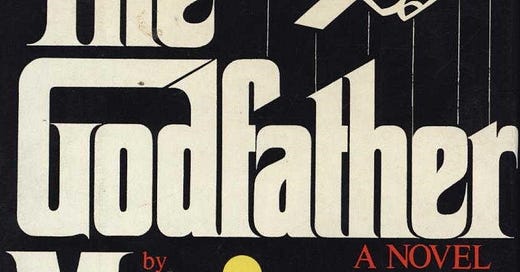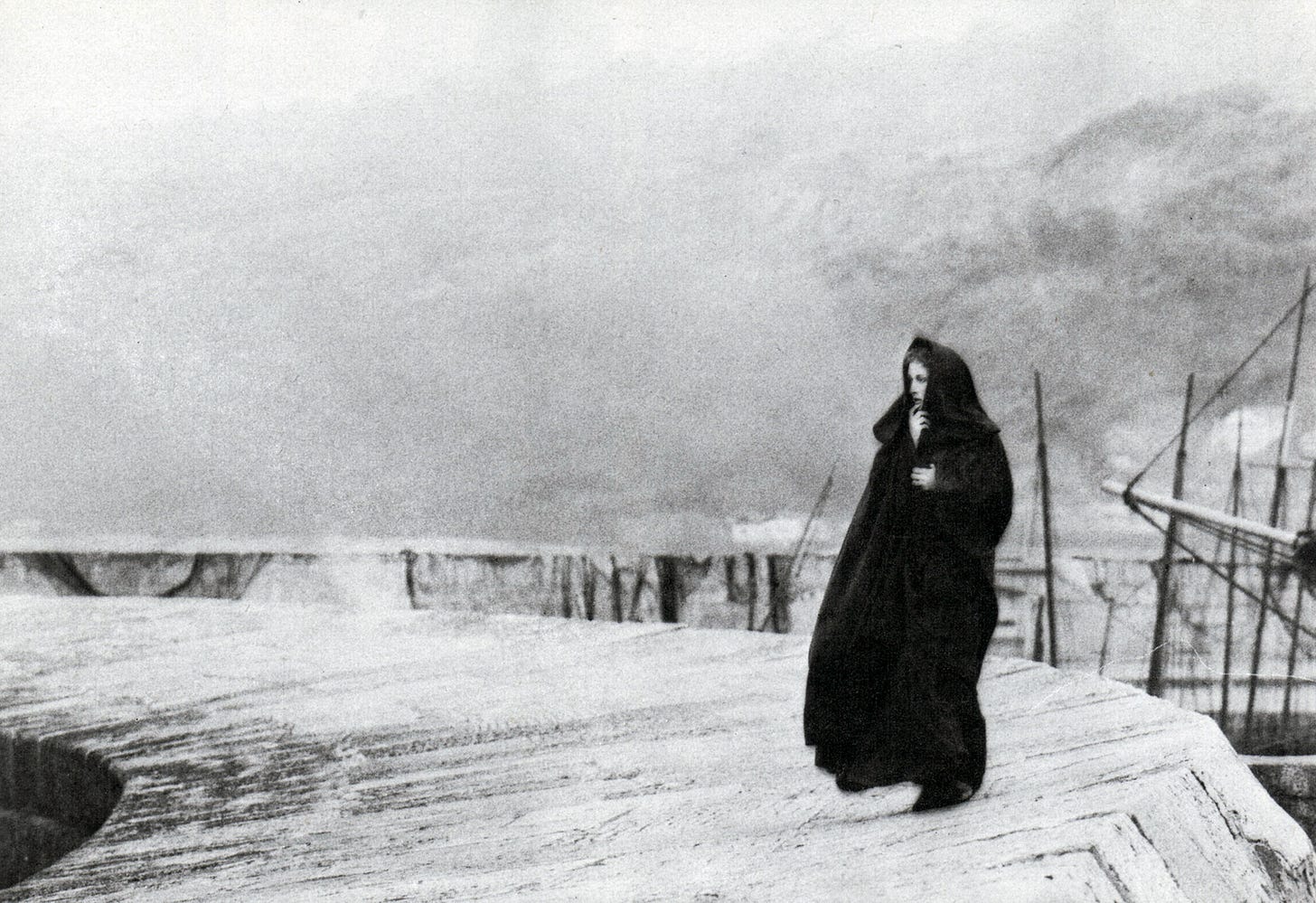[Note: Put cursor over footnote for pop-up.]
Well-Known/Popular Books:
The Andromeda Strain, Michael Crichton 1
The Godfather, Mario Puzo 2
Portnoy's Complaint, Philip Roth 3
Rich Man, Poor Man, Irwin Shaw 4
Slaughterhouse-Five, Kurt Vonnegut, Jr. 5
Seven More Interesting Works of 1969
I Know Why the Caged Bird Sings [autobiography], Maya Angelou
The Unfortunates, B. S. Johnson 6
The Four-Gated City, Doris Lessing
Sexual Politics, Kate Millett 7
Ada or Ardor: A Family Chronicle, Vladimir Nabokov
Master and Commander, Patrick O'Brian 8
Special Mention:
Naked Came the Stranger, Penelope Ashe 9
My List:
Mr. Bridge, Evan S. Connell 10
The French Lieutenant’s Woman, John Fowles 11
Fat City, Leonard Gardner 12
The Left Hand of Darkness, Ursula K. Le Guin
New Sounds in American Fiction [stories], Gordon Lish, ed. 13
Yellow Back Radio Broke-Down, Ishmael Reed 14
Sometimes the film version of a novel is so iconic that the novel is overshadowed (or we never knew there was a novel)—as in the case of The Pawnbroker [see the note in Birth Year Project: 1961]. But The Godfather was a blockbuster novel—the kind of thing I’d typically steer clear of . . . except a few years ago I had a hankering to check out some of the big mid-century novels and read The Godfather and liked it and reminded myself not to be so blindly snobby. [Whereas, Grace Metalious’, Peyton Place (1956) wasn’t nearly the fun I’d expected.]
Roth’s breakout novel. Wiki: “Its success turned Roth into a major celebrity, sparking a storm of controversy over its explicit and candid treatment of sexuality, including detailed depictions of masturbation using various props including a piece of liver.”
Appears on a number of 100 Best English-Language Novels lists.
Before Shaw was a bestselling novelist he was a playwright of some renown (this was news to me). He was also a prolific short story writer and, later, a screenwriter. Rich Man, Poor Man sold over six million copies and was the basis of a popular 1976 mini-series of the same name. Two other notable novels by Shaw: The Young Lions (1948) and Lucy Crown (1956). His second novel, The Troubled Air (1951) took on McCarthyism [The House Committee on Un-American Activities]. Shaw was blacklisted as a result; he spent the next 25 years in France and Switzerland.
This is also in the Speculative Fiction post [Time Travel 2]. Ditto for The Left Hand of Darkness [Classic Sci-fi].
The Unfortunates was published in a box with no binding (readers could assemble the book any way they liked, apart from the chapters marked "First" and "Last." As a structural experiment, it’s reminiscent of Julio Cortázar’s novel, Hopscotch (1963). [Cortázar’s chapters could be read consecutively, up to a stopping point . . . or read according to a numbered scheme adding chapters not in the first reading, subtracting others. Over the years, various poets and fiction writers have tried to emulate the formal experimentation visual artists had pursued since the earliest days of the 20th Century—cubism, for instance, which let painters show all sides of an object at once, or how it moved through space/time as in Duchamp’s “Nude Descending a Staircase” . . . but reading is stubbornly linear and most of the attempts to free the page from its constraints proved gimmicky, irritating, unillum-inating.
I haven’t read The Unfortunates [or even seen a copy], but I imagine that absorbing the chapters in random order isn’t an impossible burden to lay on the reader [much less than trying to parse unconventional page layouts, for instance, attempts at simultaneity such as side-by-side texts or merging texts within the flow of lines on the page]. There are a few “experimental” books in the canon of great reads—but only a few. So far I’ve spent two-hundred-some words on this footnote and haven’t even touched on what the novel’s about. Maybe that should tell us something. For the record, Jonathan Coe [The Rotter’s Club, 2001] called The Unfortunates “one of the lost masterpieces of the sixties.”
https://www.womenofthehall.org/inductee/kate-millett/
https://www.newyorker.com/books/page-turner/a-last-interview-with-kate-millett
Many moons ago I was at a writer’s conference on Flathead Lake, and in the van on the way to dinner, Bill McKibben started talking about The Master and Commander books. I’d recently read his book, The End of Nature (1986)—it gave me a bad case of apocalypse-itis and I was more than a little intimidated by the guy. Anyway, he loved Patrick O’Brian’s work, and I thought, Sea stories? Really? A few years later, I read one, then another one—I got up to the eleventh, The Reverse of the Medal (1986) before taking a breather. They’re more properly known as the Aubrey-Maturin series. Here’s a bit from Wiki:
. . . a sequence of nautical historical novels—20 completed and one unfinished—by English author Patrick O'Brian, set during the Napoleonic Wars and centering on the friendship between Captain Jack Aubrey of the Royal Navy and his ship's surgeon Stephen Maturin, a physician, natural philosopher, and intelligence agent.
https://en.wikipedia.org/wiki/Naked_Came_the_Stranger
“Penelope Ashe” is the pen name of twenty-four journalists who banded together to write a book that was, according to the project’s mastermind, Newsday’s Mike McGrady, deliberately awful but chock full of sex, to demonstrate how crass/vulgar/low-brow American literary taste had become, the bestseller lists laden with books such as The Carpetbaggers [Harold Robbins, 1961] and Valley of the Dolls [Jacqueline Susann, 1966]. Several in the cohort were former Pulitzer Prize in Journalism winners. Each of the authors wrote a chapter [some had to be heavily edited—the writing was too good]. Naturally, Naked Came the Stranger became a bestseller; months later, when the hoax was revealed, sales shot up even farther.
“No one ever went broke underestimating the taste of the American public.” —H. L. Mencken
This is the companion piece to his 1959 classic, Mrs. Bridge. Many readers know Connell only from his nonfiction work, Son of the Morning Star: Custer and the Little Bighorn (1985), but these two novels were groundbreaking in their way—an upper middle-class Kansas City family, between the two world wars, told in very short, vignette-like chapters. Quite moving in their way, both of them.
Fowles was a popular literary novelist in his day, but I fear he's not read much now. Before this novel he’d published The Collector (1963) and The Magus (1965). He said the genesis of The French Lieutenant’s Woman was the image of a women standing on a quay looking out to sea. She was in Victorian dress. The story gradually coalesced around this figure, but he realized that it wasn’t to be an “historical” novel in the ordinary sense. In a note to himself, he wrote:
"You are not trying to write something one of the Victorian novelists forgot to write; but perhaps something one of them failed to write. And: Remember the etymology of the word. A novel is something new. It must have relevance to the writer's now - so don't ever pretend you live in 1867; or make sure the reader knows it's a pretence."
In theater, the “fourth wall” is sometimes broken—that is, actors can stop pretending they’re in a self-contained world, and speak directly to the audience—these interruptions can be quick “asides,” rather like talking to oneself (think of Hamlet saying “the play's the thing/Wherein I'll catch the conscience of the king”) or more substantially meta/ postmodern . . . in any case, I remember the jolt I got, many pages into The French Lieutenant’s Woman, when Fowles tells us, with no warning, that a certain character will die the day Hitler invades Poland.
When the novel was adapted for film [Jeremy Irons, Meryl Streep], the problem of how to show this doubleness—being simultaneously Victorian and not-Victorian—was solved by having the movie we see be about making a movie out of the story, showing the cast in and out of period costume, characters and actors, both.
Footnote re: The Magus: Writers sometimes wish they could rectify problems with their published work; Fowles actually rewrote The Magus and put out a revised edition (1977).
Gardner’s only novel, a classic of boxing fiction. Set in the California of the 1950s. This novel appears on many of my lists
https://www.salon.com/1996/09/30/gardner/
This anthology has stories by many big names in mid-century short fiction: Grace Paley, James Purdy, Bruce Jay Friedman, Donald Barthelme, Richard Yates . . . but I treasure this volume for a single, once-hard-to-locate story by John Graves, “The Last Running.” Texas, 1923, two old men—the Comanche, Starlight, and the Texas rancher, Tom Bird—and one old bison, Shakespeare. You can read it in The Atlantic archive: https://www.theatlantic.com/magazine/archive/1959/06/the-last-running/640178/
Ishmael Reed—85 and still getting it done. A writer of every conceivable genre. Among his eleven other novels: The Freelance Pallbearers (1967), Mumbo Jumbo (1972), and The Last Days of Louisiana Red (1974).
The New York Review of Books: "Yellow Back Radio Broke-Down is a full blown 'horse opera,' a surrealistic spoof of the Western with Indian chiefs aboard helicopters, stagecoaches and closed circuit TVs, cavalry charges of taxis."
Life: "Ishmael Reed has mastered the vocabulary of blasphemy. He skins all our sacred cows."






